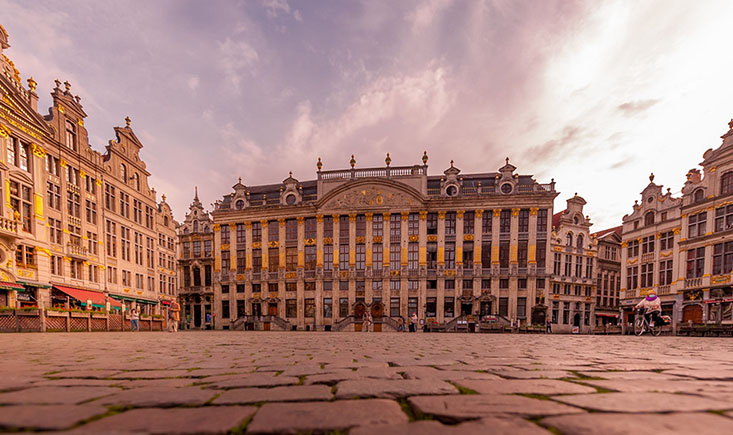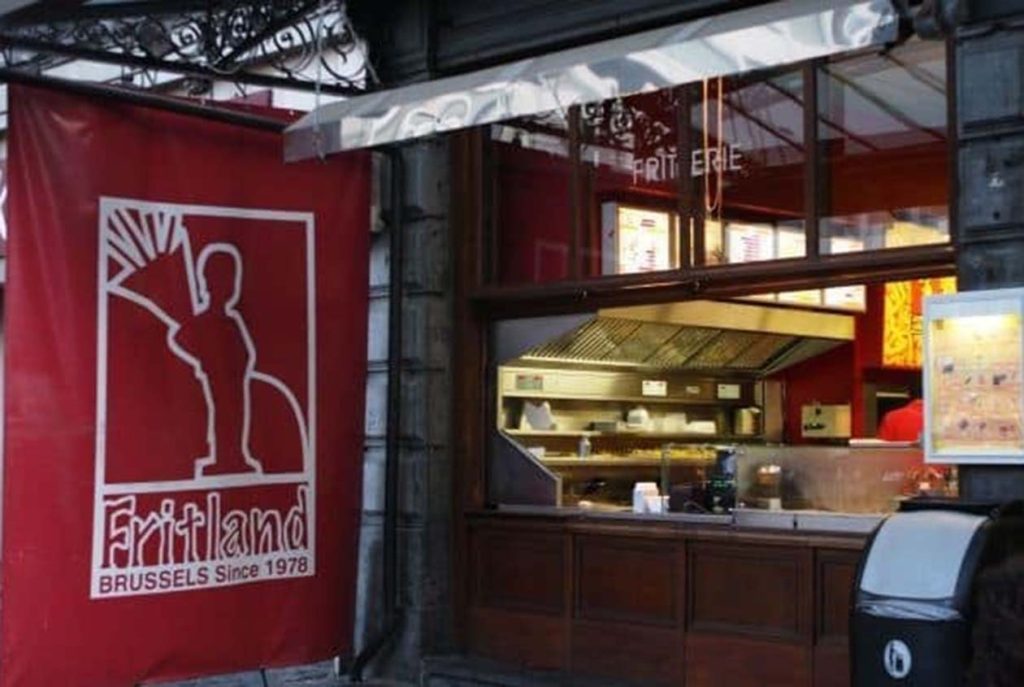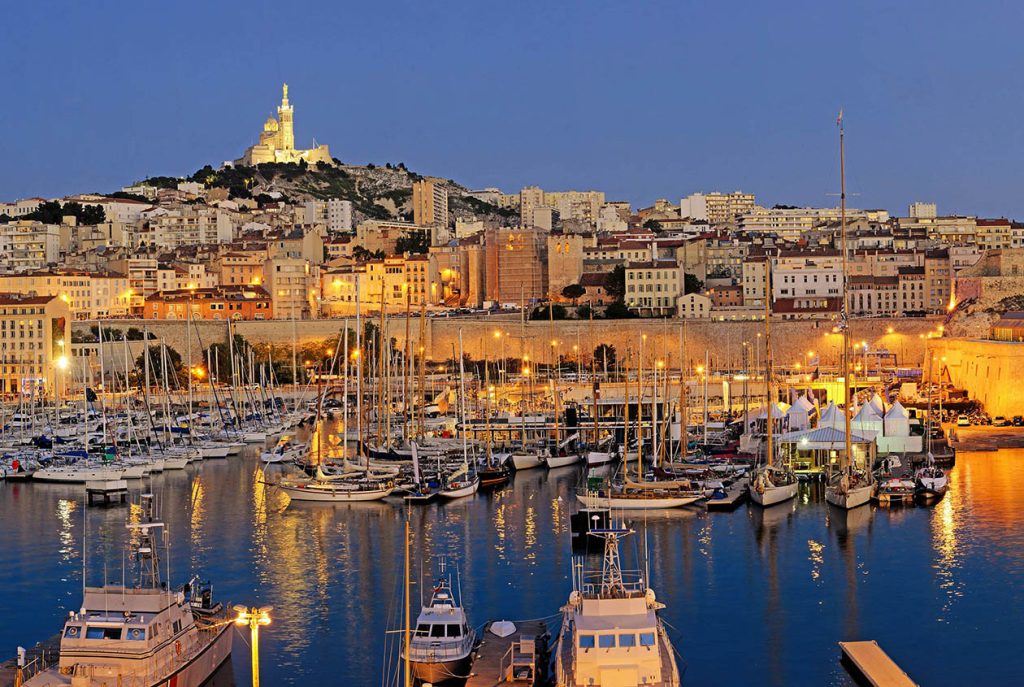
Brussels, the capital of Belgium, is not only the political hub of Europe but also a city rich in history, culture, art, and gastronomy. As the headquarters of the European Union, it holds great international influence while preserving its unique Belgian charm. Strolling through the streets of Brussels, you’ll encounter an eclectic mix of architectural styles—medieval, Baroque, Gothic, and Art Nouveau—along with stunning murals and historic sculptures that reflect the city’s deep cultural heritage.
Beyond its architectural marvels, Brussels is also a food lover’s paradise. From the enticing aroma of street waffles and crispy Belgian fries to fresh mussels served with a variety of sauces, your taste buds will be in for a treat. Moreover, as a world-famous chocolate destination, Brussels boasts numerous artisanal chocolatiers, offering exquisite delights with every bite.
Whether you are a history buff, an art enthusiast, a shopping lover, or a traveler eager to dive into local food culture, Brussels has something for everyone. By learning a few local phrases, experiencing authentic Belgian beer, and exploring the cultural scene, you can easily integrate into this fascinating city and enjoy a deeply immersive and delightful journey.
1. Understanding Brussels’ Cultural Identity
1.1 Language: A Multilingual City – French, Dutch, and English
Brussels is a unique bilingual city where both French and Dutch are official languages. However, due to its international atmosphere, English is also widely spoken in many areas. The usage of languages varies by district: in the city center and the southern parts, French is more dominant, whereas Dutch is more commonly used in the northern districts and some suburbs. Additionally, as the headquarters of the European Union, Brussels hosts people from all over the world, further enhancing its multilingual environment.
In daily life, public transportation, government institutions, and street signs are typically bilingual in French and Dutch. For example, you may see the following bilingual signs around the city:
- Grand Place / Grote Markt (Brussels’ Grand Square)
- Rue Neuve / Nieuwstraat (New Street, a major shopping area)
- Gare du Midi / Zuidstation (Brussels South Station, a key transport hub)
Although most locals speak English, learning a few basic French or Dutch phrases can make interactions more pleasant and open up opportunities for more friendly conversations. Here are some simple greetings that will help you integrate into the local culture:
- Bonjour! (Hello!)
- Merci! (Thank you!)
- Excusez-moi, parlez-vous anglais? (Excuse me, do you speak English?)
In smaller restaurants, traditional markets, or family-run shops, English may not be as commonly spoken. In such cases, trying a few simple French expressions can be helpful.
- If you don’t speak French or Dutch, consider downloading a translation app like Google Translate for quick assistance.
- When entering a restaurant or store, if you’re unsure which language to use, start with “Excuse me, do you speak English?” If the response is in French or Dutch, try using basic French expressions.
1.2 Brussels’ Lifestyle: A Slow Pace with an Eye for Detail
Unlike fast-paced cities like Paris or London, Brussels has a more relaxed rhythm. Outside of working hours, locals enjoy taking their time rather than rushing from place to place. Social life plays a big role in the city, with people gathering in cafés or bars to chat over a good meal or a glass of Belgian beer.
To truly experience Brussels’ lifestyle, try the following:
- Enjoy a coffee or hot chocolate at a café instead of taking it to go. Many locals love sitting at outdoor cafés, sipping their drinks while people-watching.
- Visit an open-air bar after 5 PM, order a Belgian craft beer, and chat with locals. The bar culture in Brussels is strong, especially on Friday evenings, when friends and colleagues meet up for a casual drink.
- Explore second-hand bookstores, art galleries, and independent designer shops to experience Brussels’ artistic side. Neighborhoods like Saint-Gilles and Ixelles are full of small, unique stores run by independent artists and designers.
Brussels locals also appreciate small joys in life, whether it’s preparing a delicious breakfast, carefully choosing a fine Belgian chocolate for an afternoon treat, or shopping at a weekend market for fresh ingredients. Their focus on quality is evident in the city’s many boutique restaurants, artisan bakeries, and specialty coffee shops.
- At restaurants and bars, servers won’t rush you to pay—locals enjoy taking their time. If you’re ready to leave, politely signal the waiter instead of waiting for them to ask.
- Local markets, like the Place du Jeu de Balle flea market, are great places to soak up the city’s laid-back atmosphere, chat with vendors, and hunt for vintage treasures.
1.3 Cultural Etiquette: Friendly but Respectful of Personal Space
Brussels locals are generally friendly, but they also value politeness and personal space more than in some other cultures. Here are a few key social norms:
- Greeting etiquette: In formal settings, handshakes are common when meeting new people. Among friends, a light cheek kiss (usually three times) is customary, following a French-style greeting. However, for first-time encounters, a handshake is the safest choice.
- Shopping etiquette: When browsing in boutiques or markets, avoid touching items without permission, especially in chocolate shops, jewelry stores, or high-end fashion stores. It’s polite to ask first: “Je peux voir?” (Can I take a look?)
- Dining etiquette: In restaurants and cafés, keep your voice low and avoid loud conversations, especially in fine dining establishments, where a quiet ambiance is preferred.
While Brussels locals are warm and welcoming, they are generally less physically expressive than people from Italy or Spain. They tend to keep a respectful distance in social interactions, so excessive physical contact might make them uncomfortable.
- Tipping is not mandatory, but if you’re happy with the service, leaving 5%-10% is appreciated.
- On public transport, avoid talking loudly on the phone or playing music without headphones—respecting others’ personal space is important.
If you respect the local culture and etiquette, Brussels locals will be more open to interacting with you. While they might not be as outwardly expressive as Southern Europeans, once they see your interest in their culture, they’ll be happy to share their insider tips and recommendations for discovering the best of their city!
2. Exploring Brussels Like a Local: Food & Drink
2.1 Waffles (Gaufres/Waffles): Street Snack vs. Authentic Restaurant Experience
Brussels has two main types of waffles:
- Brussels Waffle: Larger, rectangular, light, and crispy—typically eaten in restaurants with toppings like fruit, chocolate, or whipped cream.
- Liège Waffle: Smaller, denser, with caramelized sugar pearls—perfect as a street snack.
Recommended waffle spots:
- Maison Dandoy – The most famous waffle shop in Brussels.
- Le Funambule – Near the Manneken Pis statue, known for its sweet flavors.
2.2 Fries (Frites): Belgium’s Pride

Belgian fries are thicker and crispier than regular fries, best enjoyed with various sauces such as:
- Frites + Mayonnaise – Classic Belgian style.
- Frites + Andalouse – Slightly spicy sauce, a local favorite.
Best places for fries:
- Fritland – One of the most famous fry shops in Brussels.
- Maison Antoine – Even politicians visit this legendary spot.
2.3 Belgian Beer: A National Treasure
Belgium is world-famous for its beers, with over 1,000 local brews. Popular types include:
- Trappist Beers: Brewed in monasteries, rich and complex (e.g., Chimay, Westmalle).
- Lambic Beers: Sour and bubbly (e.g., Kriek (cherry) and Gueuze).
- Blonde Beers: Smooth and easy to drink (e.g., Leffe Blonde).
Top beer bars:
- Delirium Café – Offers 2,000+ types of beer.
- Moeder Lambic – Specializes in local craft beers.
3. Planning an Efficient City Tour
3.1 Save Money with the Brussels Card
If you plan to visit multiple museums and attractions, the Brussels Card is a great investment. It offers:
Free entry to 40+ museums (e.g., Belgian Comic Strip Center, Royal Museums of Fine Arts).
Discounts at selected restaurants, shops, and bars.
Optional public transport access, allowing unlimited metro, tram, and bus rides.
Brussels Card prices (2024):
- 24 hours: €29
- 48 hours: €41
- 72 hours: €49
- + Public Transport: Add €8 to any pass duration.
Where to buy:
- Online (Brussels tourism website) for mobile use.
- Tourist information centers, train stations, select hotels, and major attractions.
If you plan to visit three or more museums in a day, the Brussels Card is highly cost-effective!
3.2 Suggested Travel Itineraries (1-3 Days)
Day 1: Classic Brussels (First-Time Visitors)
Morning:
- Grand Place – A stunning UNESCO-listed square.
- Manneken Pis – The famous peeing boy statue.
Afternoon:
- Belgian waffles + fries at Maison Dandoy & Fritland.
- Royal Palace & Magritte Museum – Explore Belgian surrealist art.
Evening:
- Belgian beer experience at Delirium Café.
Day 2: In-Depth Exploration
Morning:
- Atomium – A futuristic landmark offering panoramic views.
- European Parliament District – Learn about EU politics.
Afternoon:
- Belgian Comic Strip Center – Celebrate Belgium’s comic heritage.
- Brussels Park – A relaxing green space for a leisurely break.
Evening:
- Chez Léon – A famous seafood restaurant; try mussels with fries.
Day 3: Bruges or Ghent Day Trip
- Bruges – A fairy-tale medieval town with canals.
- Ghent – A vibrant city with historic castles and stunning cathedrals.
Both cities are 1 hour by train from Brussels Central Station.

4. Payment & Credit Card Tips in Brussels
- Credit cards (Visa/MasterCard) are widely accepted, but cash (€) is still preferred in small shops, markets, and public restrooms.
- Avoid airport ATMs due to high withdrawal fees; use city center ATMs instead.
- Use no foreign transaction fee credit cards (e.g., Chase Sapphire, Revolut, Wise) to save on extra charges.
By following these tips, you’ll adapt quickly to Brussels’ culture and have a more authentic travel experience!


